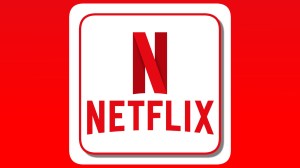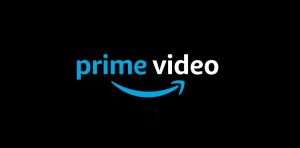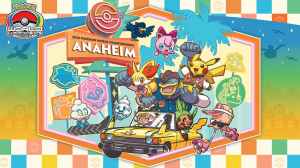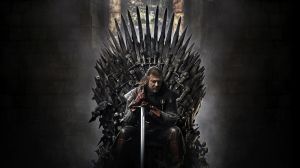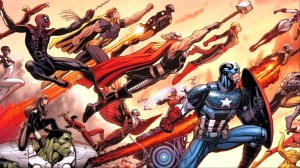
Though it’s based on a Marvel comic, the message Disney are sending right now is that Big Hero 6 is not a Marvel movie; definitely not in the way that people have come to understand the term. There’s no crossover potential with The Avengers, there’s no notes-session with Kevin Feige, there’s no space set aside in the Phase 2 box set.
Videos by ComicBook.com
This is a Disney film, albeit one about superheroes. At least, sort of superheroes. These guys don’t have ‘powers’ as such, but use technology. But if that’s good enough for Batman, of course.
Last week, I saw a preview of around a quarter of the film, including such superhero staple scenes as “suiting up for the first time” and “first trial-run of powers across the city.” I then got to have a chat with Roy Conli, the film’s producer.
He’s well-practiced at keeping secrets so, for example, any question of there being a Stan Lee cameo in the movie was met with ducking and diving. The kind of ducking and diving that really seemed to mean “Yes,” mind you, but no firm commitment, just a promise that the film won’t disappoint.
You know, I bet you $10 that there’s a Stan Lee cameo in the film, even if Conli couldn’t say so.
Here’s a transcript of the big chunk of our chat where Conli was happy to speak openly. This is where he gave me some idea of his role in the project, as well as of his ambition to reinvent the superhero genre.
BC: I’m always interested in how, in a studio that works the way Disney Animation does, how a producer ends up on a project, whether a project is given to you or if you are given a platter of projects to choose from?
RC: It’s a little bit of both. Things have changed throughout the years and what I think has happened since John Lasseter has been there is that we used to deal with a development team, they had ideas and we were assigned, but now it’s driven by the director. The director goes in front of the story trust and John with three ideas, and they’ll start the development and at that point the director will approach a producer and if there is a marriage to be made, a marriage will be made. There are times when, obviously, if Peter Del Vecho [another Disney producer] and I are sitting there, the director might have a choice of one of the two of us.
BC: Ooh, that could be hurtful, couldn’t it?
RC: Ah, I’m so old I don’t give a… [laughs]
BC: So take me back to the moment you made a marriage with Don on this project.
RC: Don Hall and Chris Williams [the co-directors].
BC: They were already together at that point, were they?
RC: Don’s idea came up first but then Don looked to Chris. I have to say, theirs has been an amazing marriage. They’re both amazing story artists and, I think, Chris has this wonderful sense of entertainment and naïveté, and Don has this big, thematic mind. Together, and I think they recognised this within them, it’s an interesting pairing.
When they approached me, they’re not at all concerned about having a ‘creative producer’ – and when I say ‘creative producer,’ I mean that if I see something I think is funky, I’ll say it is. There are some artists who don’t want the producer to say anything, they just want them to put everything together and just leave us alone. Don and Chris are so inclusive, and the culture at Disney now is becoming more inclusive that way.
The story trust took a while to come to fruition and really started functioning at a high level during Tangled. The amount of trust you need to walk into a room with your peers and friends and be as honest as you can, share your ideas and give away your ideas, that’s rare. John brought that to the table. The great thing about these last eight years for me is that it’s been a great education. I’ve learned more in the last eight years than I did in the previous thirteen.
BC: So, when Don and Chris did come to you, why did you say yes?
RC: First of all, the story of a young man who needs to be repaired was appealing to me emotionally. For me, what I look for is something that’s going to be an emotional hook. Creating something funny is actually very difficult, but in order to make something funny, you need to know it has a heart. Once you have a heart and can understand the core of a project, then the characters are going to drive.
I looked at all of the elements of the story and was incredibly attracted to it. It was, to a certain degree, a reinvention of a genre. That’s part of why I’m so proud of Tangled, because it was, in my mind, a reinvention of the Disney fairy tale. This, to me, was the reinvention of the superhero story, and that’s a big challenge. That got me excited about it.
BC: What’s been your biggest contribution to this film, then? What do you feel you contributed personally?
RC: I work with the greatest in the world at this stuff – look at Paul Felix who is our production designer, or Michael Kaschalk, our effects guy who is brilliant.
Years ago, back during Tangled, a journalist came to me and asked “Monsieur Conli, I just want you to know that the films you make are so beautiful.” I hope that I contribute to the beauty of it. I come from a theatrical background, from a design background, just a full storytelling background, and I just hope I can contribute just a little of that.
BC: There’s no one contribution you’d put your finger on today?
RC: Can I create images like Paul, or effects like Michael? No, I can’t do that. Can I tell a story like Chris and Don? No. I’m in the fortunate position of being able to help these guys get that on the screen. And I have the experience to know when someone is smarter than me, more artistic than me, and I’ve never been afraid to hire someone who is better than me. If there’s anything that I’ve given to this film, it’s that I’ve been able to hire a lot of people better at their jobs than me.
Thanks again to Roy for taking the time to talk to me. Big Hero 6 opens across the US on November 7th. I’m in the UK so you’ll probably have seen it months before me – we have to wait until January 30th next year.


